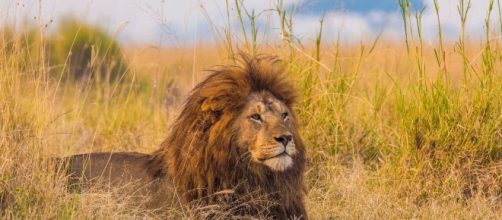Lions have been part of the African landscape, but their reign might soon come to an abrupt end. Lack of food was a factor in why seven big casts, including the saber-toothed tiger, went extinct toward the end of the last Ice Age, according to scientists. Today, two big cats – the African lion and the Sunda Clouded Leopard – face the same extinction threat, a new study shows.
A report from the University of Sussex analyzed whether big cat extinction trends during the Ice Age could be applied to the populations of modern species. The researchers laid out the disheartening facts, but there’s still a chance, albeit critical, to save modern giant felines.
The extinction trend is continuing
Scientists used the extinct felines as a model for today’s animals, focusing specifically on the availability of prey and how declines have affected big cats in the pasts and what we can expect in the future. "These charismatic predators are facing this consistent threat that started in the Ice Age and continues to this day, and we need to turn that trend around," said lead researcher Dr. Christopher James Sandom.
Today, there are fewer than 25,000 wild lions left – making them as rare on the continent as rhinos. And contrary to popular opinion, this is not due to high-profile issues such as trophy hunting. The main cause of the decline is human- carnivore conflict.
The same thing happened with ancient big cats such as the cave lions, American lions, American cheetahs and the saber-tooth. If they were still around today, researchers say their food sources would be limited, and human pressure is a great contributing factor. An alarming truth these days is that the lion population in Africa has been decimated: in the past 20 years, numbers have halved.
The lion diet
Compiling an extensive database of what big cats are known to eat, researchers show that only a quarter of their preferred prey species are left across their natural ranges. Common preys have gone extinct as well, often as a result of human activity.
Dr. Sandom believes humans of today must combat the Ice Age effect, and with available technology along with conservation strategies, saving these animals is possible.
While combatting deforestation is necessary, protecting the prey of big cats should also be considered.
The whole world could lose the African lion and the Sunda clouded leopard “within a generation” if conservation efforts are scarce. In the words of Dr. Sandom: “We need to buck this Ice Age trend once and for all and to reinforce the urgency for governments to protect both big cat species and their prey.”


